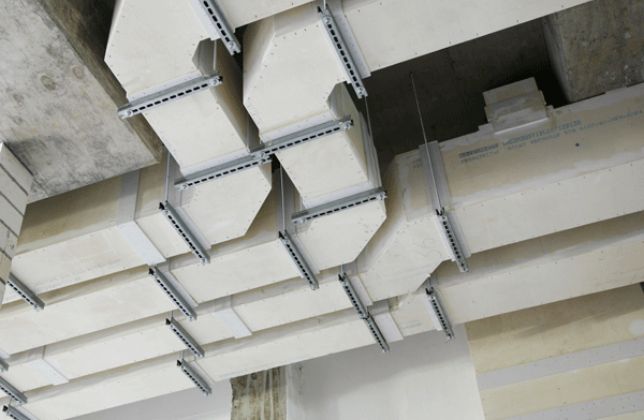Fire Rated Duct
Truestar Air Systems
Fire Rated Duct
Specialised ducting systems called “fire-rated ducts” are made to withstand fire and stop smoke and flames from spreading throughout buildings. In commercial and industrial environments where fire safety rules are strict, these ducts are essential parts of fire prevention systems. Here are some important characteristics and things to think about with fire-rated ducts:

Building Materials: Materials that have undergone testing and certification for their fire resistant qualities are usually used to build fire-rated ducts. Stainless steel, galvanised steel, and specially treated duct board with fire-retardant coatings are examples of common materials.
Fire Resistance Ratings: Ducts that have been given a fire rating are categorised according to how long they can resist flames. Usually, these ratings are stated in hours (e.g., 1-hour, 2-hour, 3-hour fire rating). To ascertain their fire resistance, the ducts are tested in compliance with industry standards like UL 723 (ASTM E84) or ASTM E119.
Building and Installation: To guarantee that fire-rated ducts satisfy fire code regulations, they are built utilising certain methods and materials. More reinforcement at joints and seams, fire-retardant insulation, and thicker gauge metal are a few examples of this. The integrity of the fire barrier must be installed correctly, using gaskets, supports, and seals that are rated for fire.
Fire Dampers: To stop smoke and fire from spreading through the ductwork, fire-rated duct systems frequently have fire dampers positioned at key points. When subjected to extreme temperatures, these dampers are made to automatically close, thereby closing off the ducts and dividing the fire.
Smoke manage: Fire-rated ducts can be made to resist flames as well as to manage smoke in the case of a fire. To detect and reduce the spread of smoke throughout the structure, smoke dampers and detectors may be incorporated into the ducting system.
Code Compliance: Local building codes, industry standards like NFPA 90A (Standard for the Installation of Air-Conditioning and Ventilating Systems) and NFPA 90B (Standard for the Installation of Warm Air Heating and Air-Conditioning Systems) must be followed by fire-rated duct systems.



